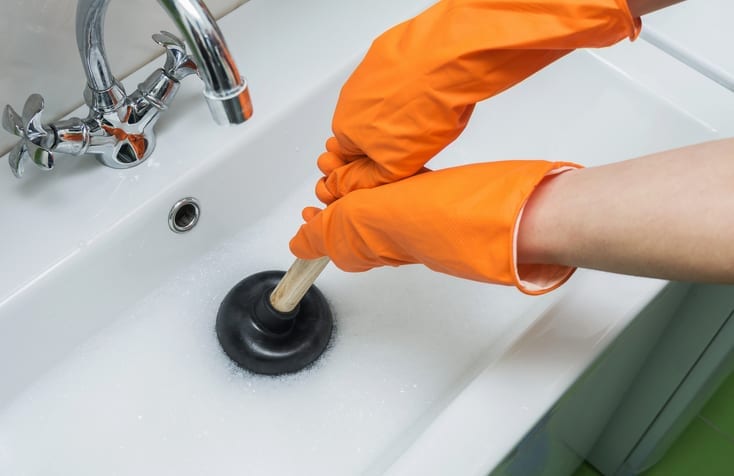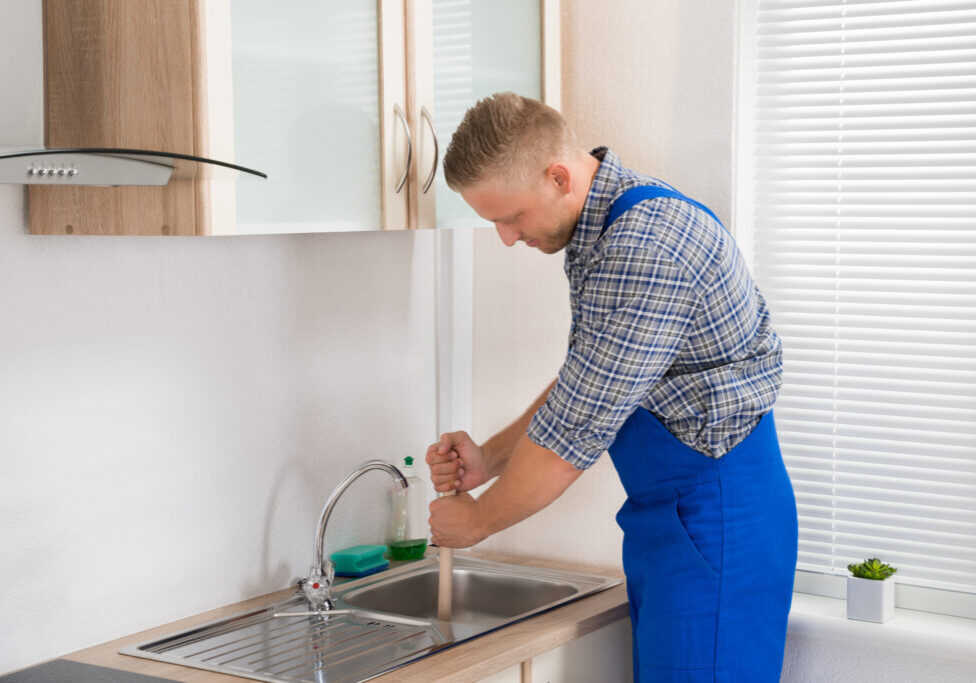Learn Plungers and Drain Cleaners: Effective Approaches
Learn Plungers and Drain Cleaners: Effective Approaches
Blog Article
The article down below involving Tips on How to Effectively Use a Plunger is particularly entertaining. Don't overlook it.

Intro
Correct upkeep of family drains pipes is important for stopping blockages and guaranteeing smooth water circulation. One of the trick devices in every home owner's toolkit is the bettor, along with various drainpipe cleansers designed to tackle persistent obstructions effectively. This article explores exactly how to make use of bettors and drainpipe cleansers successfully to keep your drains pipes moving openly.
Area 1: Recognizing Plungers
Sorts of Plungers
There are numerous kinds of plungers offered, each created for different sorts of drains pipes and clogs. One of the most usual kinds consist of cup plungers, flange plungers, and accordion plungers.
Exactly How Plungers Job
Bettors work with the concept of creating pressure and suction to remove obstructions. When effectively used over a drainpipe, they develop a vacuum cleaner that can pull out debris or break up blockages.
Picking the Right Bettor
Picking the best plunger depends upon the type of drain and the nature of the obstruction. Cup plungers are suitable for sinks and bathtubs, while flange bettors are better matched for bathrooms due to their design.
Typical Blunders with Bettors
Avoiding these mistakes makes sure efficient plunging: inappropriate seal around the drainpipe, not enough pressure, and unclear bordering particles.
Area 2: Utilizing Plungers Successfully
Prep work
Before plunging, ensure the plunger covers the drainpipe entirely and develops a tight seal. Clear any noticeable debris around the drain opening.
Strategy
Begin with gentle plunging movements to develop suction. Boost stress slowly, making use of a steady rhythm. Repeat as required till the drainpipe clears.
Fixing Tips
If diving does not function, try adjusting the seal, applying petroleum jelly for a far better seal, or making use of a different type of plunger.
Section 3: Comprehending Drain Cleaning Company
Sorts Of Drainpipe Cleaning Company
Drain pipes cleaners can be chemical or chemical. Chemical cleansers use solid chemicals to dissolve clogs, while enzymatic cleansers make use of natural enzymes to break down organic matter.
How Drainpipe Cleaning Company Job
Chemical cleansers react with obstructions to dissolve them, while enzymatic cleansers break down organic products like hair and grease without hurting pipes.
Safety and security Considerations
Constantly wear gloves and eye defense when making use of chemical drainpipe cleaners. Ensure appropriate ventilation and comply with supplier instructions very carefully.
Eco-Friendly Alternatives
Take into consideration utilizing vinegar and cooking soft drink or enzyme-based cleansers for eco-friendly options that are much safer for pipes and the atmosphere.
Section 4: Utilizing Drain Cleansers Successfully
Application Methods
Pour chemical cleaners directly right into the drainpipe opening. Allow them to help the suggested time prior to purging with hot water. Chemical cleansers need to sit overnight.
Safety measures
Stay clear of blending various types of cleaners, as this can produce toxic fumes. Never ever make use of chemical cleaners combined with a bettor, as splashing can take place.
Dealing With Stubborn Obstructions
For consistent blockages, consider using a pipes snake or calling a specialist plumber to avoid damages to pipelines.
Final thought
To conclude, comprehending exactly how to use plungers and drainpipe cleaners efficiently is vital for maintaining healthy and balanced pipes systems. By picking the right devices and strategies, homeowners can tackle minor blockages and avoid major plumbing problems down the line.
How to Use a Plunger to Unclog a Drain
The humble plunger is a simple yet effective tool for breaking clogs in sinks, tubs and toilets. This handy tool is easy to use. You can make the most of its power if you understand how it works. Ready to dive in? Here’s what you need to know.
Safety First!
Never use a plunger with drain chemicals. Water will splash as you work, and the chemicals can spatter, burning skin and eyes. It’s a good idea to use rubber gloves and wear safety goggles when you work on a clog.
Choose the Right Tool for the Job
Plungers come in two different styles. Sinks, bathtubs and showers require a cup plunger. Like its name suggests, the rubber end is shaped like a cup. Use a flange plunger on toilets. These plungers have a rubber funnel extending from the cup. A plunger needs to be big enough to cover the drain.
Ready, Set, Plunge!
Coat the rim: Coat the plunger rim with petroleum jelly. This helps make a better seal.
Block outlets: Hold a wet rag over nearby outlets such as the overflow vent or the drain in a second sink.
Release air: Insert the plunger at an angle into the water. Water will displace air in the cup. A water-filled cup is more forceful than one filled with air.
Keep the plunger upright: Hold the plunger perpendicular to the drain. Use fast, forceful strokes, but make the first stroke gentle. The first stroke can create a splash if the cup still contains air. Thrust the plunger 15 to 20 times.
Snap off the plunger: The final stroke should be a strong upward motion that ends when the plunger snaps off the drain.
Repeat the process: you may need to repeat this sequence several times. When the water drains away, your work is done. High-five! https://plumbernw.com/blog/how-to-use-a-plunger-to-unclog-a-drain/

Application Methods
Pour chemical cleaners directly right into the drainpipe opening. Allow them to help the suggested time prior to purging with hot water. Chemical cleansers need to sit overnight.
Safety measures
Stay clear of blending various types of cleaners, as this can produce toxic fumes. Never ever make use of chemical cleaners combined with a bettor, as splashing can take place.
Dealing With Stubborn Obstructions
For consistent blockages, consider using a pipes snake or calling a specialist plumber to avoid damages to pipelines.
Final thought
To conclude, comprehending exactly how to use plungers and drainpipe cleaners efficiently is vital for maintaining healthy and balanced pipes systems. By picking the right devices and strategies, homeowners can tackle minor blockages and avoid major plumbing problems down the line.
How to Use a Plunger to Unclog a Drain
The humble plunger is a simple yet effective tool for breaking clogs in sinks, tubs and toilets. This handy tool is easy to use. You can make the most of its power if you understand how it works. Ready to dive in? Here’s what you need to know.
Safety First!
Never use a plunger with drain chemicals. Water will splash as you work, and the chemicals can spatter, burning skin and eyes. It’s a good idea to use rubber gloves and wear safety goggles when you work on a clog.
Choose the Right Tool for the Job
Plungers come in two different styles. Sinks, bathtubs and showers require a cup plunger. Like its name suggests, the rubber end is shaped like a cup. Use a flange plunger on toilets. These plungers have a rubber funnel extending from the cup. A plunger needs to be big enough to cover the drain.
Ready, Set, Plunge!
Coat the rim: Coat the plunger rim with petroleum jelly. This helps make a better seal. Block outlets: Hold a wet rag over nearby outlets such as the overflow vent or the drain in a second sink. Release air: Insert the plunger at an angle into the water. Water will displace air in the cup. A water-filled cup is more forceful than one filled with air. Keep the plunger upright: Hold the plunger perpendicular to the drain. Use fast, forceful strokes, but make the first stroke gentle. The first stroke can create a splash if the cup still contains air. Thrust the plunger 15 to 20 times. Snap off the plunger: The final stroke should be a strong upward motion that ends when the plunger snaps off the drain. Repeat the process: you may need to repeat this sequence several times. When the water drains away, your work is done. High-five! https://plumbernw.com/blog/how-to-use-a-plunger-to-unclog-a-drain/

As an avid person who reads about How to Unclog Your Sink with a Plunger, I was thinking sharing that chunk was a smart idea. Are you aware of somebody else who is looking into the subject? Take a moment to promote it. I praise you for being here. Don't forget to check up our blog back soon.
Book Inspection Report this page